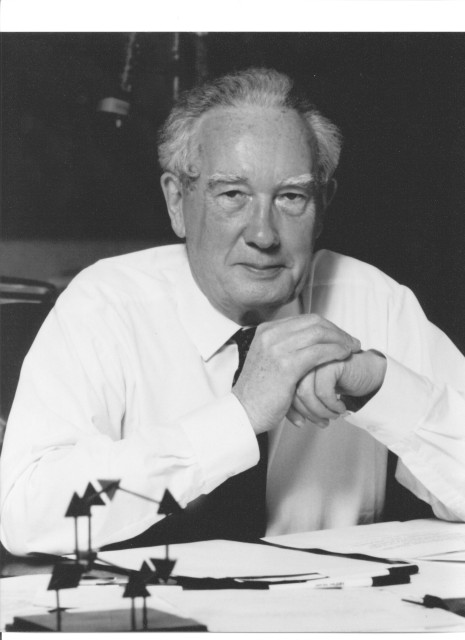Derek Harold Richard Barton
1918-1997

In 1950 Barton published a 4-page paper in Experientia entitled "The Conformation of the Steroid Nucleus", in which he analyzed how molecular shape affects chemical behaviour. The paper was developed using cyclohexane ring conformations determined from electron diffraction studies by the Norwegian physical chemist Odd Hassel. Thus conformational analysis, which ever after changed the way organic chemists think about structure, synthesis and chemical reactivity, came into being. Barton and Hassel shared the 1969 Nobel Prize in Chemistry for their seminal work.
In a long and distinguished career, Barton went on to make major contributions to organic photochemistry (the Barton Reaction), and to the invention of new reactions and their application to natural products synthesis.
A native of England, Barton's initial positions were at Imperial College (London), Harvard, Birkbeck College (London) and Glasgow University. He became Professor at Imperial College, London (1955-1978), then Director of the Institut de Chemie des Substances Naturelles in Gif-sur-Yvette (France, 1977-85), and in 1986 he became Dow Distinguished Professor of Chemical Invention at Texas A. and M. University. He received many honors besides the Nobel, including the 1995 Priestley Medal (USA) and the 1995 Lavoisier Medal (France); an unusual honor for a chemist was his appointment (1989) by the Governor of Kentucky as a Kentucky Colonel.
Sponsor: Rosetta and William H. Reusch
Location in chemistry building: Fifth Floor; West Wing North Wall; Sequence 3
Source: Professor Barton